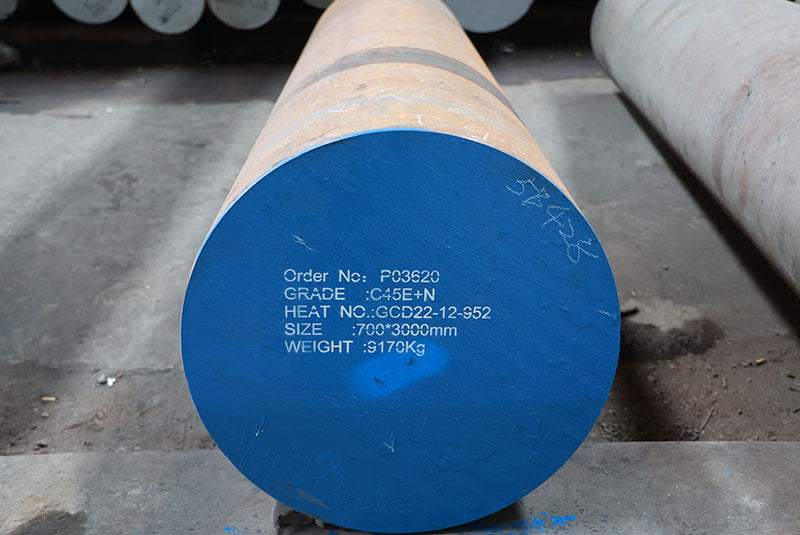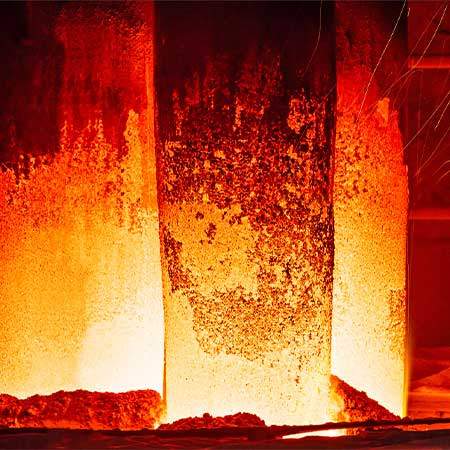Welcome to My Blog!
Before we dive into the content, I’d love for you to join me on my social media platforms where I share more insights, engage with the community, and post updates. Here’s how you can connect with me:
Facebook:https://www.facebook.com/profile.php?id=100085401406977
LinkedIn:https://www.linkedin.com/showcase/102680001/admin/dashboard/
Now, let’s get started on our journey together. I hope you find the content here insightful, engaging, and valuable.
Introduction
Steel is one of the most versatile and widely used materials in various industries, from construction and manufacturing to automotive and aerospace. Among the different grades of steel, 1045 steel stands out for its excellent balance of strength, hardness, and machinability. Understanding the composition of 1045 steel is crucial for professionals in these industries, as it directly influences the material’s properties and performance. This blog will delve into the importance of 1045 steel composition, exploring how its unique combination of elements makes it a preferred choice in numerous applications.
What is 1045 Steel?

1045 steel is a medium carbon steel that falls under the category of plain carbon steels. It is widely used in engineering applications due to its moderate tensile strength and good machinability. The “1045” designation refers to the steel’s carbon content of 0.45%, with the first digit “1” indicating that it is a carbon steel.
Key Characteristics of 1045 Steel:
- Medium Carbon Content: With a carbon content of approximately 0.45%, 1045 steel strikes a balance between strength and ductility.
- Good Machinability: 1045 steel is relatively easy to machine, making it suitable for manufacturing components with intricate details.
- Versatility: This steel grade is used in a wide range of applications, from shafts and gears to bolts and axles.
Understanding the composition of 1045 steel is essential for selecting the right material for specific industrial applications.
1045 Steel Composition: Key Elements
The composition of 1045 steel includes several key elements that contribute to its properties. These elements are carefully controlled during the steelmaking process to ensure consistent performance.
Carbon (C): 0.43% to 0.50%
Carbon is the primary alloying element in 1045 steel, responsible for its hardness and strength. The carbon content in 1045 steel is around 0.45%, which provides a good balance between hardness and toughness.
- Impact on Hardness: The carbon content increases the steel’s hardness, making it more resistant to wear and deformation.
- Impact on Strength: Higher carbon content enhances tensile strength, allowing the steel to withstand significant stress without breaking.
Manganese (Mn): 0.60% to 0.90%
Manganese is another critical element in 1045 steel composition. It improves the steel’s hardenability, which is the ability to become harder through heat treatment.
- Impact on Hardness: Manganese contributes to the formation of martensite during quenching, increasing the steel’s hardness.
- Impact on Toughness: It also enhances toughness, allowing the steel to absorb energy and resist impact.
Phosphorus (P): 0.040% (max)
Phosphorus is typically considered an impurity in steel, and its content is kept low in 1045 steel to prevent brittleness.
- Impact on Ductility: Low phosphorus content helps maintain the steel’s ductility, allowing it to be bent or shaped without cracking.
- Impact on Toughness: Excessive phosphorus can reduce toughness, so it is kept within controlled limits.
Sulfur (S): 0.050% (max)
Sulfur is another element that is considered an impurity in steel. It is kept at low levels in 1045 steel to avoid negatively affecting its properties.
- Impact on Machinability: While sulfur can improve machinability by forming manganese sulfide inclusions, too much sulfur can lead to brittleness and reduced toughness.
- Impact on Weldability: Low sulfur content helps maintain good weldability, ensuring that the steel can be easily joined using standard welding techniques.
Silicon (Si): 0.10% to 0.35%
Silicon is added to 1045 steel as a deoxidizing agent, helping to remove oxygen from the steel during the manufacturing process.
- Impact on Strength: Silicon contributes to the steel’s strength by improving its elastic limit and tensile strength.
- Impact on Corrosion Resistance: While not a primary factor, silicon can slightly enhance the steel’s resistance to corrosion.
Iron (Fe): Balance
Iron is the primary component of 1045 steel, making up the majority of its composition. It provides the base structure that supports the other alloying elements.
- Impact on Structural Integrity: Iron provides the fundamental structural integrity of the steel, supporting the properties imparted by the alloying elements.
Table: 1045 Steel Composition
| Element | Composition Range (%) | Role in 1045 Steel |
|---|---|---|
| Carbon (C) | 0.43% – 0.50% | Increases hardness and strength |
| Manganese (Mn) | 0.60% – 0.90% | Enhances hardenability and toughness |
| Phosphorus (P) | 0.040% (max) | Maintains ductility and toughness, prevents brittleness |
| Sulfur (S) | 0.050% (max) | Affects machinability, kept low to avoid brittleness |
| Silicon (Si) | 0.10% – 0.35% | Acts as a deoxidizer, improves strength |
| Iron (Fe) | Balance | Provides the base structure of the steel |
This table provides an overview of the key elements in 1045 steel composition, highlighting their roles and the impact they have on the material’s properties.
Industrial Applications of 1045 Steel
The unique composition of 1045 steel makes it suitable for a wide range of industrial applications. Its balance of strength, hardness, and machinability allows it to perform well in various demanding environments.
Automotive Components
1045 steel is commonly used in the automotive industry for the production of components such as crankshafts, gears, and axles. These parts require a material that can withstand high stress and wear, making 1045 steel an ideal choice.
- Crankshafts: The high tensile strength and wear resistance of 1045 steel make it suitable for crankshafts, which endure significant cyclic loading.
- Gears: The hardness and toughness of 1045 steel allow it to perform well in gears, providing reliable power transmission.
Machinery Parts
In the machinery industry, 1045 steel is used to manufacture a variety of parts, including shafts, couplings, and machine frames. The material’s good machinability allows for the production of complex components with precise dimensions.
- Shafts: 1045 steel’s strength and toughness make it ideal for shafts that must transmit torque and resist bending.
- Couplings: The steel’s hardness and wear resistance ensure that couplings made from 1045 steel can withstand the demands of heavy machinery.
Construction and Structural Applications
1045 steel is also used in construction and structural applications, particularly for parts that require both strength and toughness. It is used in the production of beams, columns, and other load-bearing components.
- Beams and Columns: The strength and durability of 1045 steel make it suitable for supporting structures in buildings and bridges.
- Fasteners: Bolts and nuts made from 1045 steel provide reliable fastening solutions in construction projects.
Tools and Dies
Due to its high hardness and ability to be heat-treated, 1045 steel is used in the production of tools and dies. These applications require materials that can maintain their shape and cutting edge under high stress and repeated use.
- Cutting Tools: 1045 steel’s hardness makes it suitable for cutting tools that need to retain a sharp edge.
- Dies: The toughness of 1045 steel allows it to withstand the pressures of forming and shaping other materials.
Agricultural Equipment
In the agricultural sector, 1045 steel is used to produce equipment that must endure harsh working conditions, such as plowshares, cultivator blades, and tractor components.
- Plowshares: The wear resistance of 1045 steel ensures that plowshares can cut through soil and debris without excessive wear.
- Cultivator Blades: The toughness and hardness of 1045 steel make it ideal for blades that must withstand impact and abrasion.
Heat Treatment of 1045 Steel

One of the key advantages of 1045 steel is its ability to be heat-treated, allowing for further enhancement of its mechanical properties. Heat treatment processes such as annealing, normalizing, and quenching can be applied to 1045 steel to achieve specific characteristics.
Annealing
Annealing is a heat treatment process that involves heating the steel to a specific temperature and then slowly cooling it. This process softens the steel, improving its machinability and making it easier to work with.
- Benefits: Annealing reduces hardness, increases ductility, and relieves internal stresses in the steel.
- Applications: Annealed 1045 steel is often used in applications that require extensive machining or forming.
Normalizing
Normalizing involves heating the steel to a temperature above its critical range and then allowing it to cool in air. This process refines the grain structure of the steel, enhancing its mechanical properties.
- Benefits: Normalizing increases strength and toughness, providing a more uniform microstructure.
- Applications: Normalized 1045 steel is used in applications where consistent mechanical properties are required, such as in structural components.
Quenching and Tempering
Quenching involves heating the steel to a high temperature and then rapidly cooling it in water or oil. This process hardens the steel, increasing its wear resistance. Tempering is often performed after quenching to reduce brittleness and achieve the desired level of toughness.
- Benefits: Quenching and tempering significantly increase the hardness and strength of 1045 steel, making it suitable for demanding applications.
- Applications: Quenched and tempered 1045 steel is used in the production of tools, dies, and other components that require high hardness and durability.
Conclusion
The composition of 1045 steel plays a crucial role in determining its properties and suitability for various industrial applications. With its balanced carbon content, manganese for hardenability, and the ability to undergo heat treatment, 1045 steel is a versatile and reliable material used in numerous industries. By understanding the importance of 1045 steel composition, professionals can make informed decisions when selecting materials for manufacturing, construction, and other demanding applications. Whether you are producing automotive components, machinery parts, or structural elements, 1045 steel offers the strength, durability, and machinability needed to ensure success in your projects.
FAQ
What is the carbon content in 1045 steel composition?
The carbon content in 1045 steel composition typically ranges from 0.43% to 0.50%, which gives it its characteristic strength and hardness.
How does manganese in 1045 steel composition affect its properties?
Manganese in 1045 steel composition, which ranges from 0.60% to 0.90%, improves hardenability and toughness, enhancing the steel’s overall strength and durability.
Why is phosphorus kept low in 1045 steel composition?
Phosphorus is kept low (maximum 0.040%) in 1045 steel composition to prevent brittleness and maintain the steel’s ductility.
What role does sulfur play in 1045 steel composition?
Sulfur is kept at a maximum of 0.050% in 1045 steel composition. While it can improve machinability, excessive sulfur can reduce the steel’s toughness.
How does silicon contribute to 1045 steel composition?
Silicon in 1045 steel composition, typically ranging from 0.10% to 0.35%, acts as a deoxidizer and slightly enhances the steel’s strength and corrosion resistance.
What makes 1045 steel composition suitable for heat treatment?
The carbon and manganese content in 1045 steel composition make it highly responsive to heat treatment processes like quenching and tempering, allowing for enhanced hardness and strength.
How does 1045 steel composition affect its weldability?
1045 steel composition offers moderate weldability, but preheating and post-weld heat treatment may be necessary to avoid cracking and maintain optimal mechanical properties.
What are common industrial applications of 1045 steel composition?
Due to its balanced composition, 1045 steel is commonly used in automotive parts, machinery components, tools, and structural applications requiring strength and wear resistance.
How does the iron content in 1045 steel composition impact its properties?
Iron is the primary component of 1045 steel composition, providing the base structure that supports the other alloying elements, ensuring the steel’s overall structural integrity.
Can 1045 steel composition be modified for specific applications?
While the standard 1045 steel composition is well-suited for many applications, it can be modified through heat treatment to achieve specific mechanical properties, such as increased hardness or toughness.
